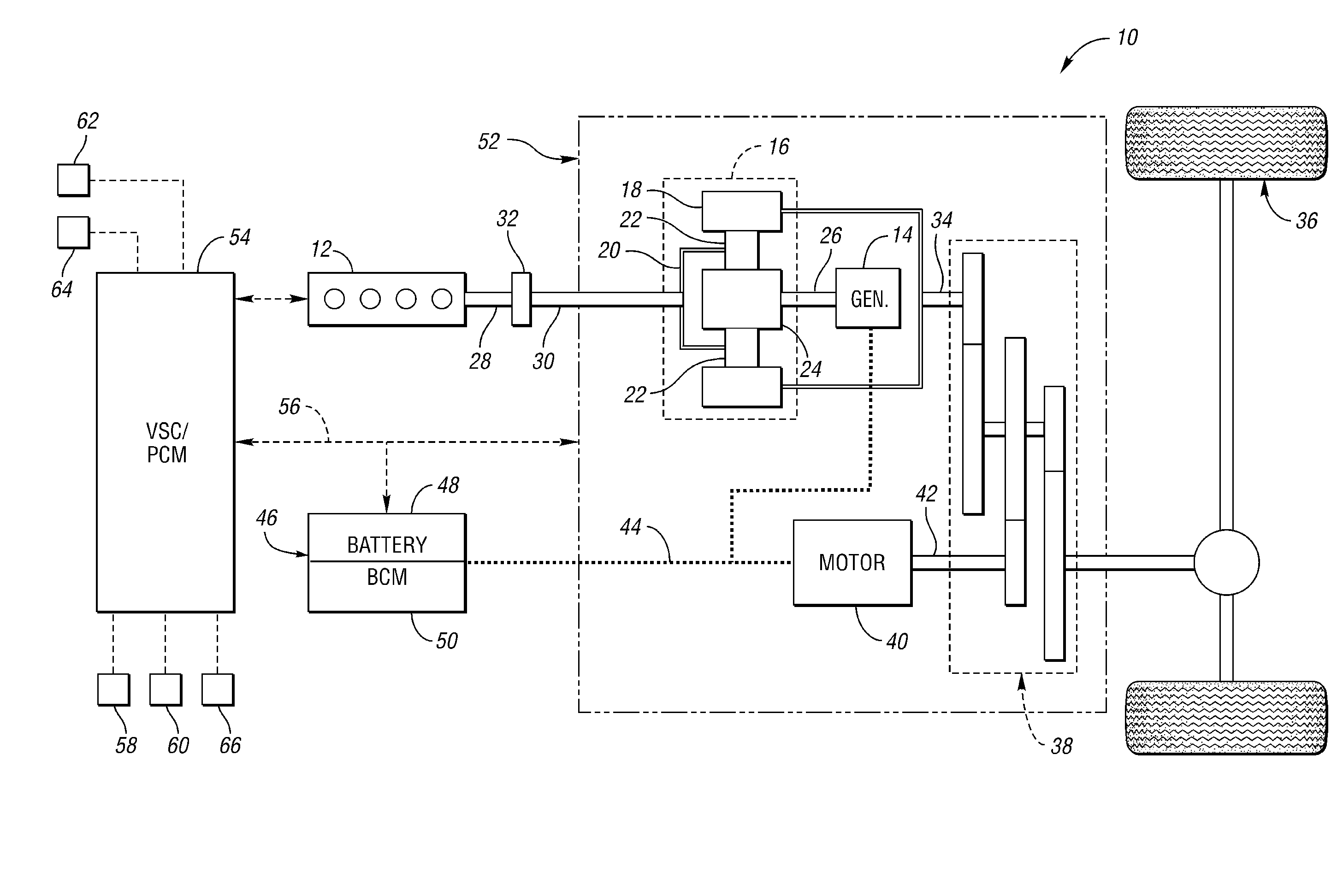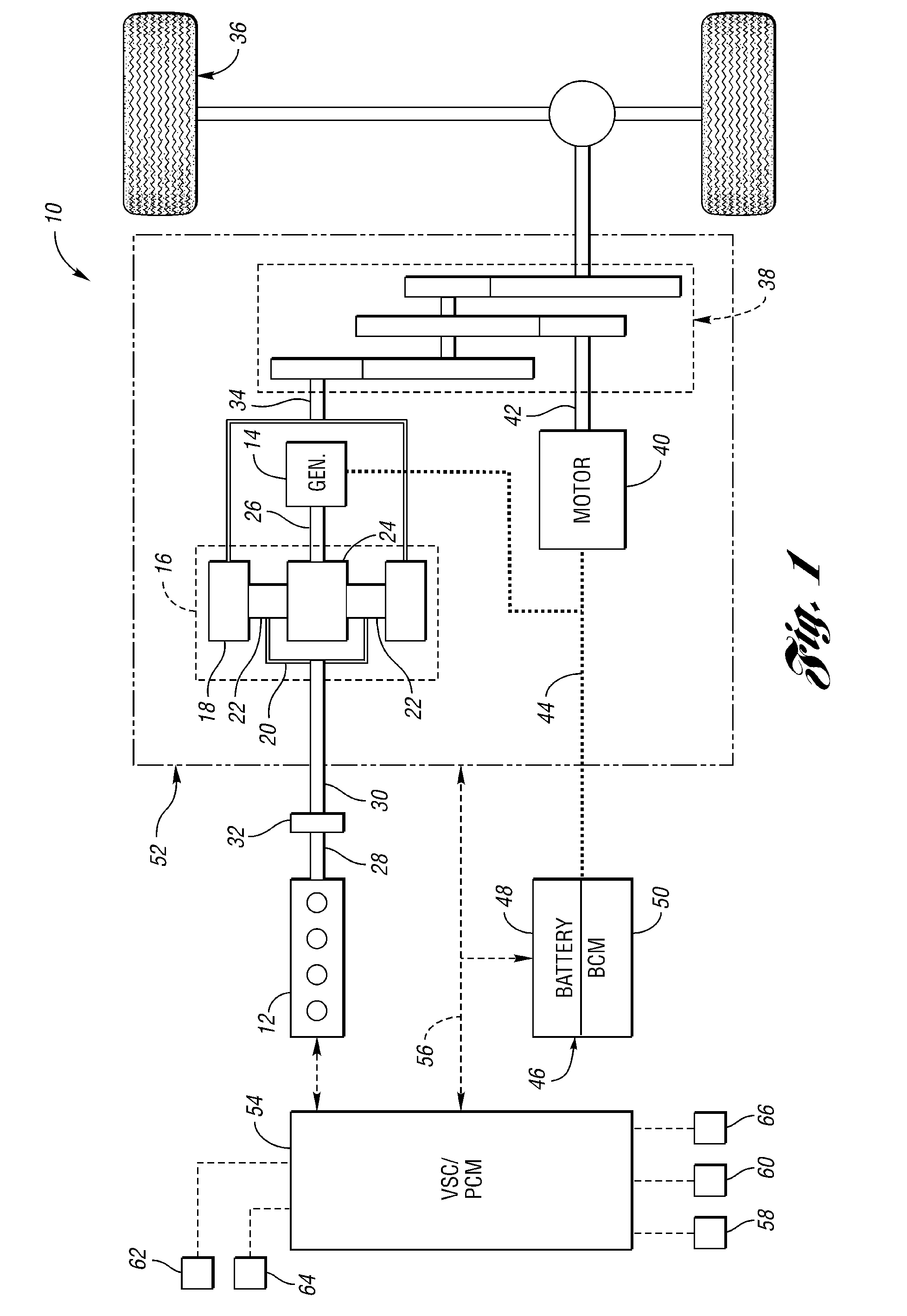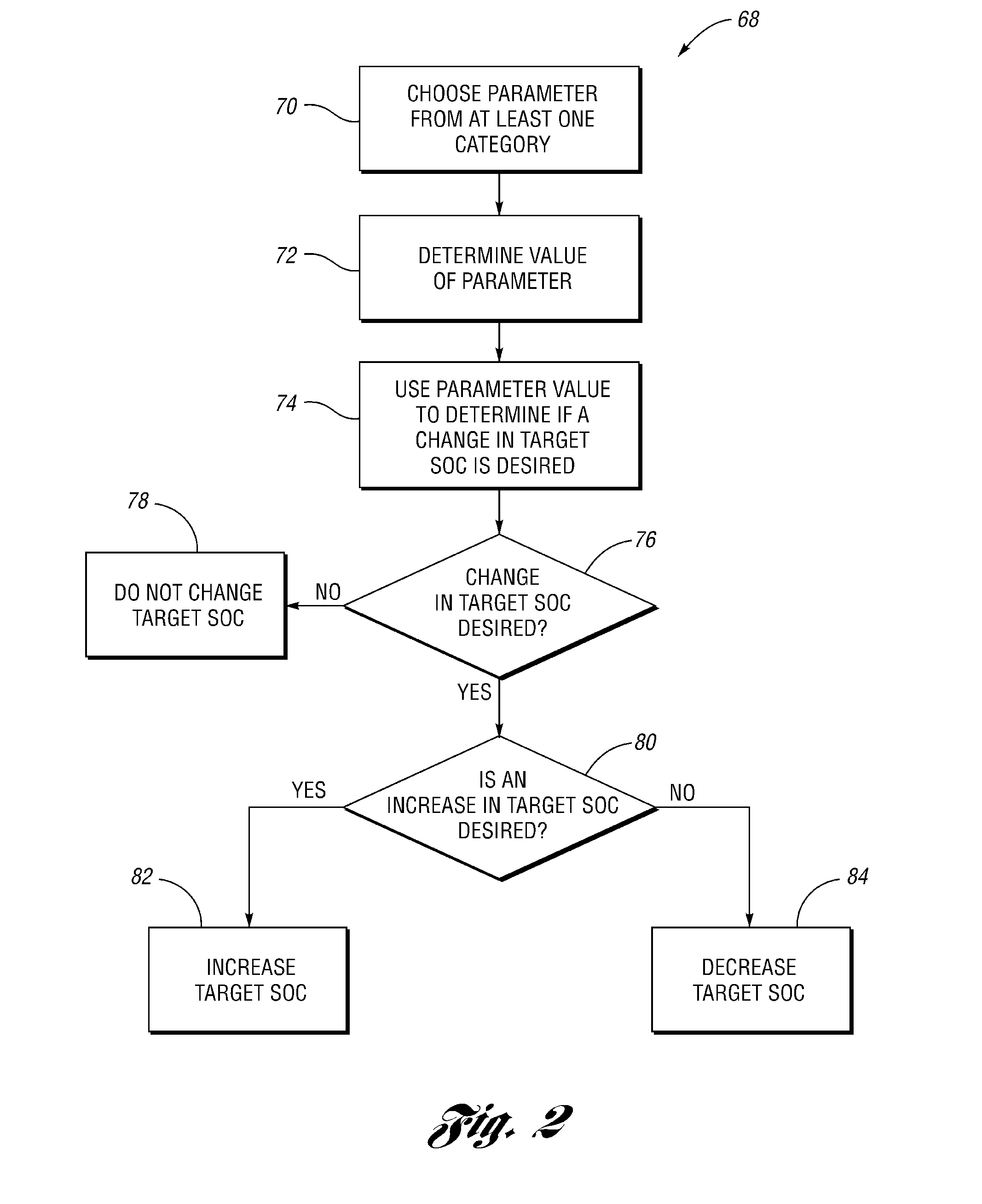[0010]In addition to the foregoing, a driver may be known to
brake very quickly. In such a case, less regenerative braking energy may be captured than if the driver braked more slowly. Again, it may be beneficial to maintain a target SOC above a baseline target SOC, since it will be contemplated that less regenerative braking energy will be available to charge the battery. Driving habits such as these can be stored, for example, in a vehicle
system controller, which may also maintain information about seat positions or other particulars of a driver. Communication with the controller as to which driver is operating the vehicle can be facilitated, for example, by actuating a button on a key fob when the driver opens the vehicle.
[0011]The expected
life span of an energy storage system, such as a battery, may be dependent on a number of factors, including how the system is operated. For example, if a battery is operated such that the state of charge is maintained over a relatively
narrow range, it may have a relatively long life. Conversely, a battery that is operated such that the SOC is allowed vary significantly within a wide range of states of charge may have a shorter life span. How the battery is operated is typically a decision for the
original equipment manufacturer (OEM) of the vehicle. For example, if the OEM wishes to increase the life span of the battery, it may decrease the range in which the target SOC resides.
[0012]Although the expected life span of the battery may be improved by such operation, the engine will likely operate more frequently, since the configuration will allow little variation in the operating SOC. Thus, the present invention provides a system and method for adjusting the range in which the target SOC resides in order to provide an expected life span for the battery desired by the vehicle owner. If, for example, the vehicle owner desires a greater life span for the battery, the range in which the target SOC resides can be set to be relatively narrow. Conversely, if the owner desires greater fuel economy and lower emissions, the range can be increased.
[0015]Similarly, if the temperature of the
ambient air outside the vehicle is such that use of a maximum
air conditioning setting is contemplated, the target battery SOC may be reduced, since it is expected that the engine will be forced on when the
air conditioning is activated. Other systems may also force the engine on, depending on how the HEV
control system is configured. For example, if the vehicle headlights are turned on when other electrical systems are in use, the added
electrical load of the headlights may cause the engine to be operated. This could occur even if the battery SOC is relatively high and the engine would not otherwise be started. The present invention, therefore, includes a system and method for reducing the target SOC when there are heavy electrical loads, or when such loads are anticipated—for example, when there are electrical systems in use, and an ambient light sensor detects that the use of the headlights is expected.
[0018]In addition, a driver may input a distance until a
driving cycle is complete—i.e., how many miles until a destination is reached and the vehicle shut off. If the distance is above some predetermined distance, the target SOC can be decreased, since there will be ample opportunity to recharge the battery prior to the destination being reached. Conversely, if the destination distance is below the predetermined distance, the target SOC may be adjusted upward to ensure that there is ample
battery charge when the vehicle is shut off. This helps to ensure that there will always be battery power available to start the vehicle.
 Login to View More
Login to View More  Login to View More
Login to View More 


